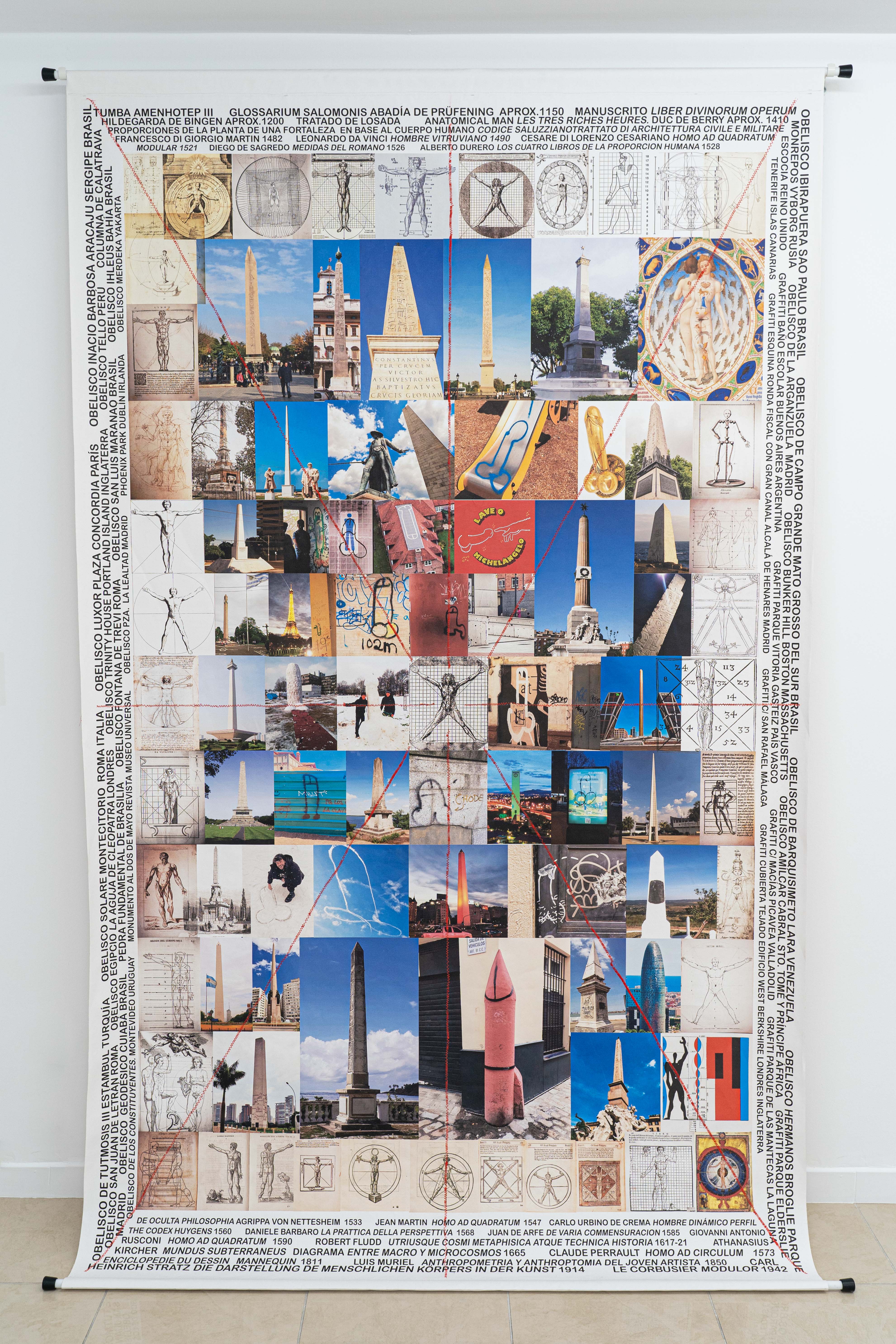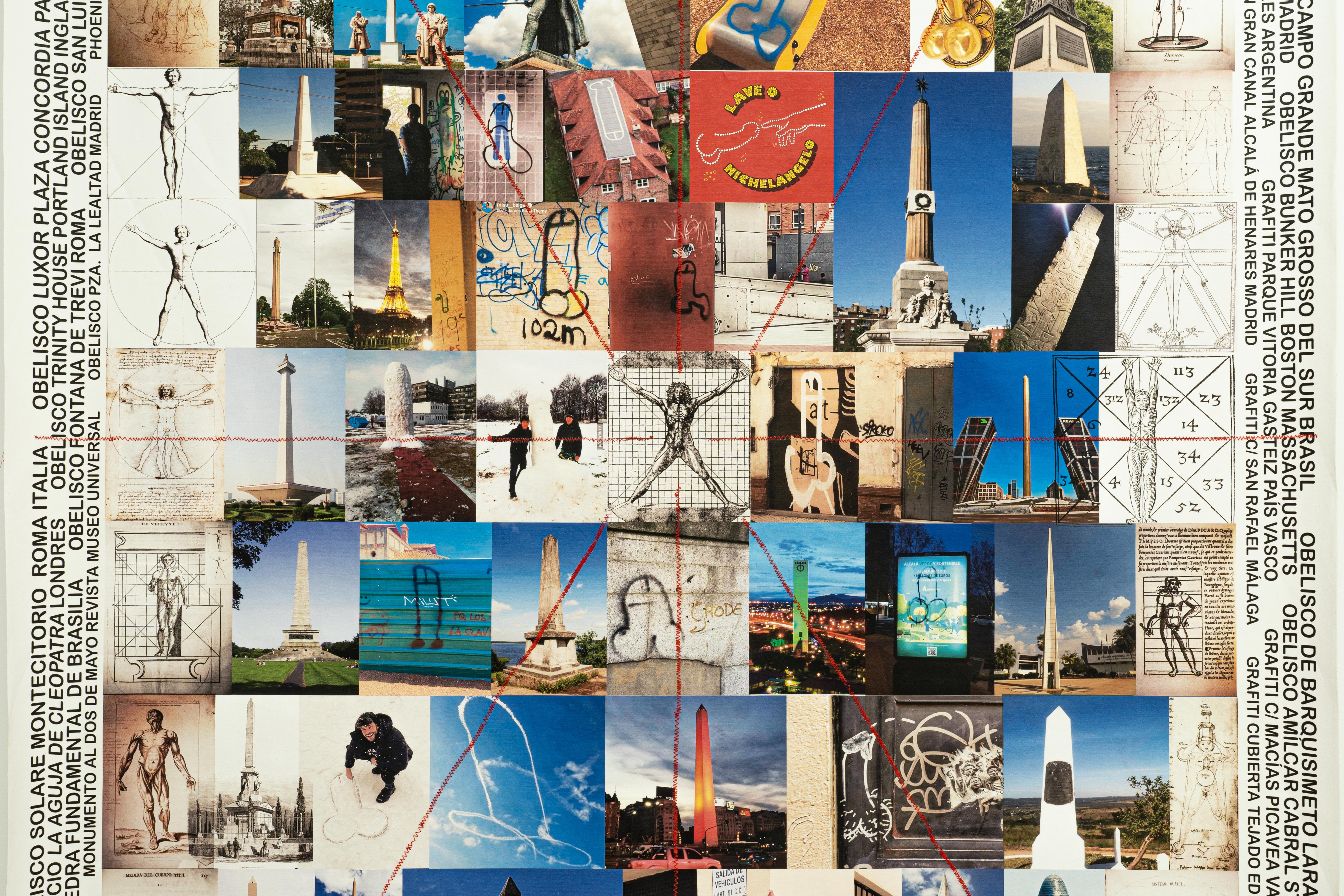

LA MEDIDA DE TODAS LAS COSAS. 2022.
Impresión digital sobre lienzo con intervencones cosidas. (250x150 cm.)
El hombre se continúa situando, a sí mismo, como centro del universo: en una posición de privilegio y ordenando el mundo.
Los espacios antropizados se dotan de representaciones que les aportan identidad ocupando un espacio relevante. Esto forma parte de un “discurso oficial” que relata historias y simboliza ideas que se comparten públicamente, en las ciudades y entre sus habitantes. Por otra parte, ese discurso oficial “destilado” en las comunidades se traducen en signos propios expresados en conductas y acciones cotidianas y colectivas. Ambos discursos comparten una misma intencionalidad política e ideológica hegemónica.
Los símbolos públicos del sistema, expuestos como estandartes de dominio, utilizados en esta obra son los pertenecientes al ámbito culto: Hombres de Vitruvio desde el siglo XV al XX , al ámbito público-urbano: obeliscos y al ámbito social-popular: grafitis fálicos.
…”El espacio actúa como control de la interacción social entre seres humanos y el dominio de un género sobre otro se perpetúa, al servicio de una sociedad heteronormativa empeñada en señalar y mantener las jerarquías” …“Para el hombre el espacio es abierto, abstracto, relacionado con la caza, el poder y la guerra […] El hombre reivindica lo público sobre lo privado, prefiriendo así la escala y lo monumental a lo selectivo y lo íntimo”… “Espacios de poder y cuerpos disidentes” de Elena Lacruz Alvira en el libro “Falocracia y Sociedad. Una visión multidisciplinar desde la observación de lo cotidiano” de Mariví Gallardo Castro. El Garaje Ediciones.
THE MEASURE OF ALL THINGS. 2022.
Digital printing on canvas with stitched interventions.
Man continues to place himself, as the center of the universe: in a position of privilege and ordering the world.
The anthropized spaces are endowed with representations that give them identity occupying a relevant space. This is part of an official discourse that tells stories and symbolizes ideas that are shared publicly, in cities and among their inhabitants. On the other hand, this official discourse “distilled” in the communities is translated into their own signs expressed in generalized daily behaviors and actions. Both discourses share the same hegemonis political and ideological intention.
The public symbols of the system, exposed as banners of dominion and represented in this work are those belonging to the cult field: Vitruvius men from the fifth to the twentieth century; to the public-urban sphere: obelisks and to the social-popular sphere: phallic graffitis.
...”Space acts as a control of social interaction between human beings and the dominance of one gender over another is perpetuated, at the service of a heteronormative society bent on pointing out and maintaining hierarchies” ...”For man, space is open, abstract, related to hunting, power and war [...] Man claims the public over the private, thus preferring the scale and the monumental to the selective and the intimate”... “Spaces of power and dissident bodies” by Elena Lacruz Alvira in the book “Falocracy and Society. A multidisciplinary vision from the observation of everyday life” by Mariví Gallardo Castro. El Garaje Editions.